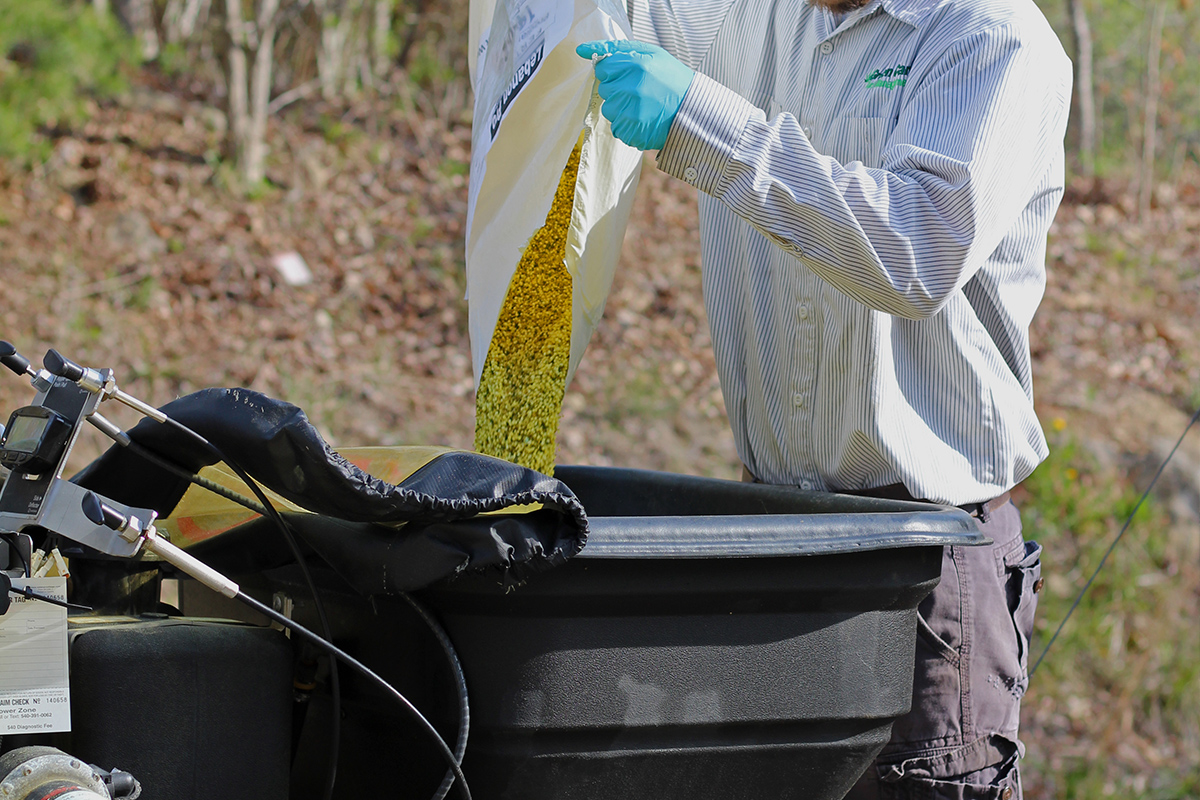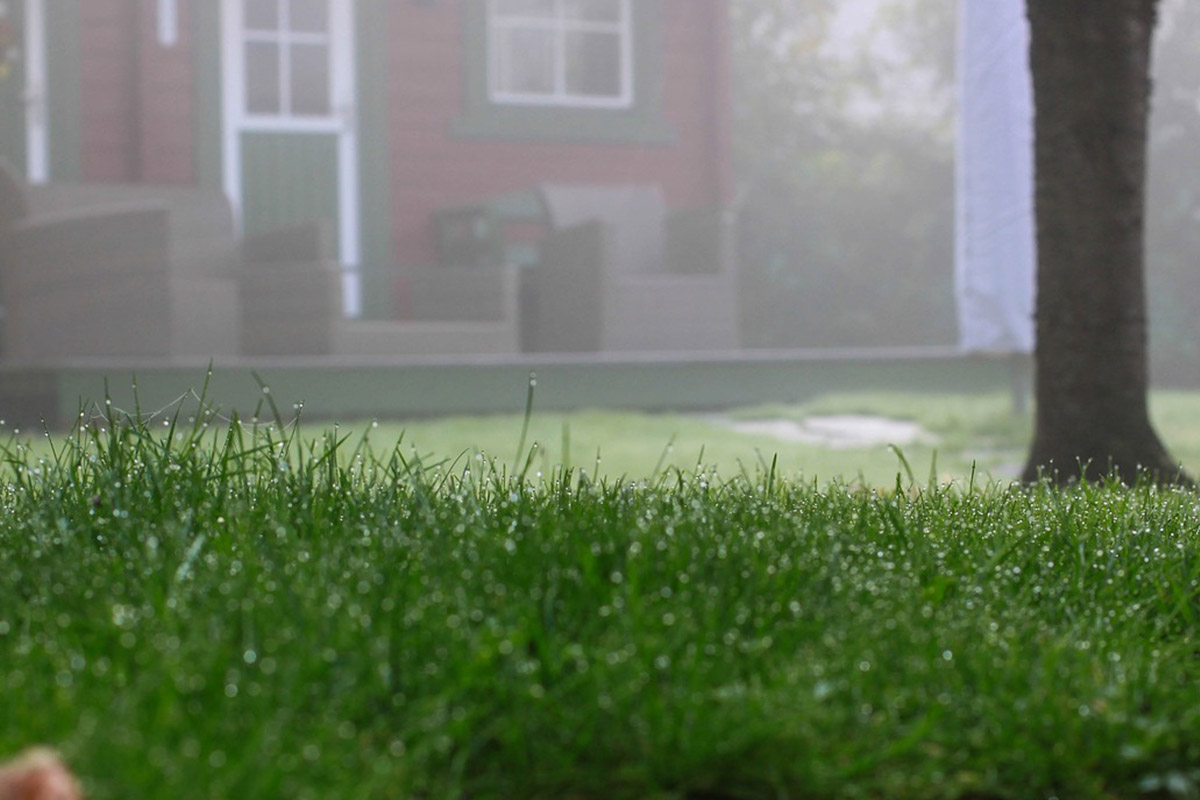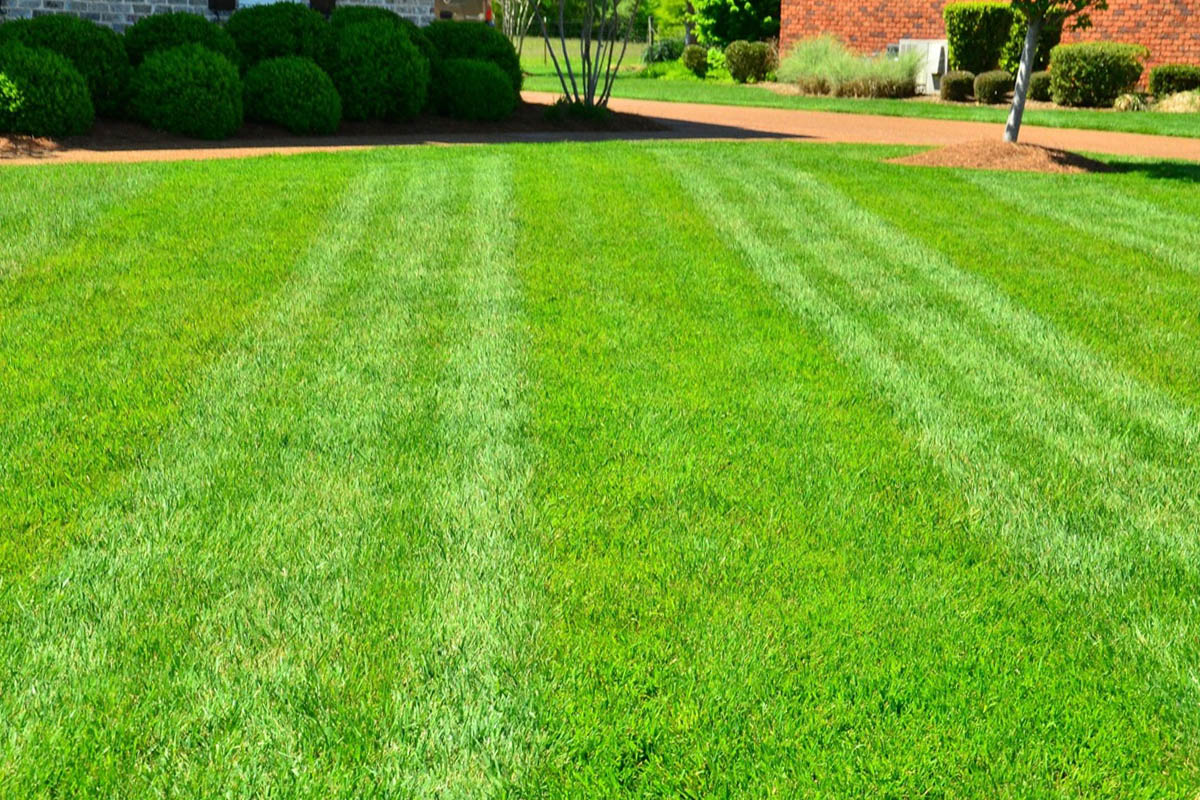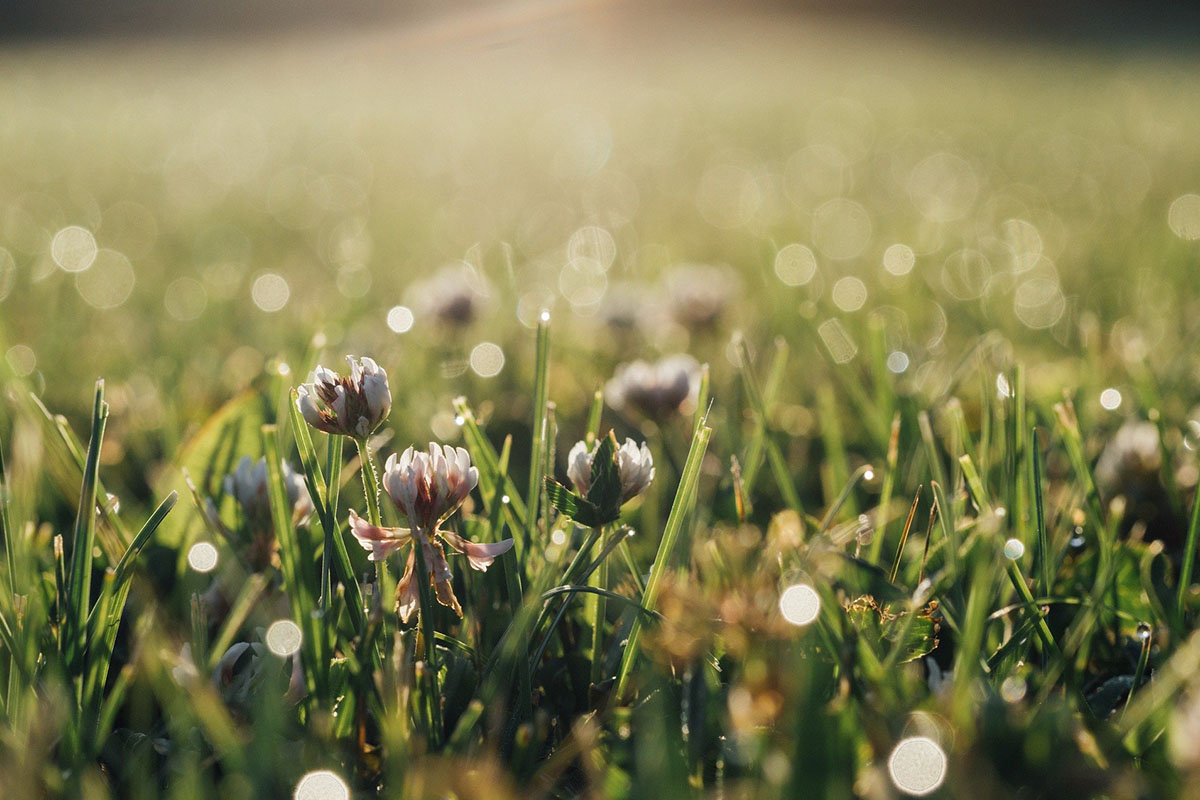Fertilizing your grass is an important step if you want to have a healthy, green lawn for as much of the year as possible. Here in the New River Valley of Virginia, most lawns consist primarily of cool season grasses. These grasses do their growing in the cooler temperatures of spring and fall. Fertilizers provide important nutrients that your turf needs to grow, as well as to stay healthy during the seasons it isn’t actively growing.
One of the most important types of fertilizer for our cool season lawns is nitrogen (N). In addition to providing valuable nutrients, N helps provide that nice green color that so many homeowners desire for their lawns. However, while this fertilizer is an important aspect of a healthy lawn, there is actually a lot to consider when it comes down to the application. Applying it in the wrong quantities or at the wrong times of year can lead to the opposite results as what you want for your lawn. So we thought we’d round up some answers to frequently asked questions about N fertilizer.
What types of N fertilizer are available?
Two main types of N fertilizer are available for lawns—quick release or slow release (quickly available or slowly available). The VCE publication, Lawn Fertilization in Virginia, explains the difference this way:
“Quickly available materials are water-soluble, can be readily utilized by the plant, are susceptible to leaching, and have a relatively short period of response. Slowly available nitrogen sources release their nitrogen over extended periods of time and are applied less frequently and at somewhat higher rates than the quickly available nitrogen sources. Slowly available sources are less-susceptible to leaching.”
At Green Care, we use slow release fertilizers on our clients’ lawns. These fertilizers have two slow release portions. First, a portion of the fertilizer has an organic base. This part of the fertilizer breaks down slowly over time with microbes and weather allowing its release. The second part of our slow release component is microscopic coated capsules of fertilizer that break down and release their important fertilizer and trace elements over a long period of time. This ensures that your lawn’s root system gets those nutrients in measured doses that won’t over-stimulate the plants into a sudden growing spurt requiring more mowing.
How much N fertilizer does my lawn need?
This is a bit of a tricky question because there’s no one-size-fits-all answer. According to the VCE publication, Lawn Fertilization in Virginia, that depends on a lot of factors, including:
- The type of grass your yard consists of. Among the different types of cool season grasses, the N needs vary.
- The maturity of your turf. Newly established turf generally needs more N than mature turf.
- The amount of sun or shade your lawn receives. Shaded areas require less N than those that receive full sun.
- The amount of traffic your yard receives. Highly trafficked lawns generally benefit from more N.
- Nitrogen availability from grass clippings. Leaving your grass clippings when mowing rather than bagging them can provide up to 1/3 of the seasonal N requirements for your lawn. So if you are leaving your clippings, your lawn will typically require less N.
So, as you can see, it can be difficult to determine your turf’s exact N needs. However, there are general guidelines you can go by depending on whether you are using a quick release or a slow release N fertilizer. These recommendations can be found in this VCE publication.
When should I apply N fertilizer to my lawn?
As recommended by VCE’s Maintenance Calendar for Cool Season Turfgrasses, fall is the preferred time of year to fertilize with N. Applications in the spring are also beneficial, but there can be a temptation to over-fertilize, leading to negative results.
Fall is a great time of year to fertilize cool season grasses. In the spring, their growth is high, but in the fall, growth is slower, which is more conducive to fertilization. Instead of using the nutrients for growth like they do in the spring, the plants move the nutrients to the roots in preparation for winter. This allows for greater root development and storage of food for the coming year. This leads to a healthy lawn come spring!
Conclusion
At Green Care, we are fertilizer and weed control experts. So if all this talk of fertilizing your lawn has you feeling overwhelmed, talk to us today. We will provide you with a free site visit to determine the nitrogen (and other) fertilizer needs for your specific type of grass and will handle all the applications throughout the year for you. Get in touch with us today to get started!





